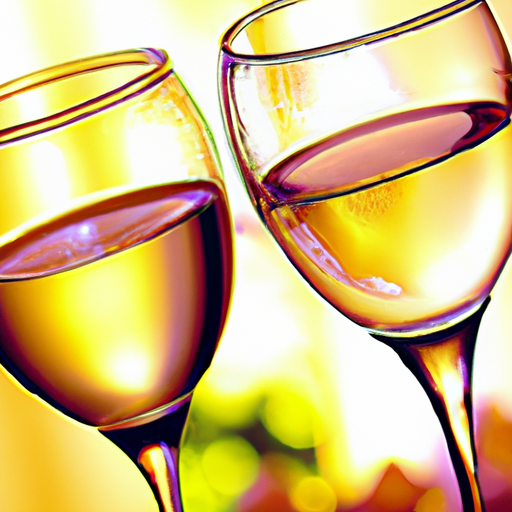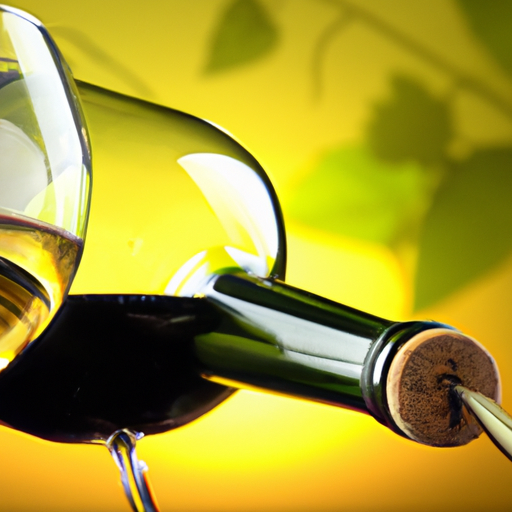Are you a foodie who loves to pair your favorite dishes with the perfect glass of wine? Well, we’ve got just the guide for you! In this article, we’ll delve into the art of food and wine pairing, offering you some expert tips and tricks to elevate your dining experience. So, whether you’re hosting a dinner party or simply looking to enhance your own palate, get ready to discover the wonderful world of content pairing food and wine.
When it comes to pairing food and wine, there are a few key principles to keep in mind. Firstly, you want to consider the flavors and components of both the dish and the wine. The goal is to find complementary or contrasting flavors that enhance each other. For example, a rich and buttery Chardonnay can beautifully complement a creamy pasta dish, while a vibrant and acidic Sauvignon Blanc can provide a refreshing contrast to a dish with spicy flavors.
Beyond flavors, it’s also important to think about the weight and intensity of both the food and the wine. Lighter dishes generally pair well with lighter wines, while heartier or more complex dishes can handle a fuller-bodied wine. Additionally, the texture of the food can also play a role. Think about how the wine’s tannins interact with the proteins and fats in the dish, creating a harmonious balance of flavors and textures.
Ready to take your food and wine pairing skills to the next level? In the upcoming article, we’ll explore different types of cuisines and wine styles, offering you specific recommendations and suggestions. Whether you’re craving a juicy steak or a delicate seafood dish, we’ve got you covered. So, stay tuned for more in-depth insights and get ready to impress your taste buds and your guests with the perfect content pairing of food and wine.

Understanding Food and Wine Pairing
Pairing food and wine is an art that can elevate your culinary experience to a whole new level. There is a science behind it, but it doesn’t have to be daunting. With a little knowledge and some experimentation, you can become a master at pairing food and wine. In this guide, we will explore the basics of food and wine pairing, the principles to consider, tips for pairing specific foods, exploring different wine varietals and styles, regional food and wine pairing, serving temperature and glassware, wine tasting and palate development, decoding wine labels, and exploring wine and food pairing events. So let’s dive right in!
The Basics of Food and Wine Pairing
When it comes to pairing food and wine, there are a few basic principles to keep in mind. The goal is to create a harmonious balance between the flavors and textures of the food and the characteristics of the wine. Here are some factors to consider when making your pairing choices:
Matching Flavors
A general rule of thumb is to pair wines with foods that have similar flavor profiles. For example, a light and delicate white wine would pair well with seafood or chicken dishes, while a bold and robust red wine would complement grilled or roasted meats.
Balancing Intensity
Consider the intensity of both the food and the wine. You don’t want one to overpower the other. If you have a rich and heavily seasoned dish, a full-bodied wine would hold up well. On the other hand, a light and delicate dish would be overpowered by a heavy and tannic wine.
Complementing Textures
Textures in both the food and the wine can also play a role in pairing. Creamy and rich dishes pair well with wines that have a silky texture, while crisp and acidic wines can cut through the fattiness of fried or oily foods.
Considering Acidity
Acidity in both the food and the wine can either enhance or detract from each other. High acid foods, like citrus-based dishes, pair well with high acid wines. On the other hand, rich and creamy dishes can be balanced by a wine with higher acidity.
Harmonizing Sweetness
If your dish has a touch of sweetness, it’s important to find a wine that can complement it. The wine should be sweeter than the food to avoid making it taste overly sweet. For example, a dessert wine would pair well with a rich chocolate cake.
Pairing Tips for Specific Foods
Now that we understand the basics of food and wine pairing, let’s look at some specific pairing tips for different types of foods.
Pairing Wine with Seafood
Seafood dishes range from delicate to rich, and the appropriate wine pairing will depend on the flavors and textures. For light and delicate seafood, such as oysters or grilled fish, a crisp and refreshing white wine like a Sauvignon Blanc or a Chardonnay would be a great choice. For richer seafood dishes like lobster or scallops, a buttery and oak-aged Chardonnay or a light-bodied red wine like Pinot Noir would work well.
Choosing the Right Wine for Red Meat
Red meat dishes, like steak or lamb, pair best with full-bodied and tannic red wines. Cabernet Sauvignon or Syrah are excellent choices as they have enough tannins to cut through the richness of the meat. For leaner cuts of red meat, like filet mignon, a medium-bodied red wine like Merlot or Malbec would also work well.
Finding the Perfect Wine for Cheese
Cheese is a versatile food that can be paired with a wide range of wines. As a general rule, white wines pair well with soft and creamy cheeses, while red wines complement harder and aged cheeses. For example, a brie or camembert cheese would pair well with a Chardonnay or a Champagne, while a cheddar or gouda cheese would go well with a Cabernet Sauvignon or a Syrah.
Pairing Wine with Spicy Foods
When it comes to spicy foods, it’s important to find a wine that can cool down the heat without being overpowered. Off-dry or semi-sweet white wines like Riesling or Gewurztraminer work well as they can balance the spice and provide a touch of sweetness. Sparkling wines or rosé wines with a touch of sweetness also work well.
Balancing Wine with Acidic Dishes
Acidic dishes, like tomato-based sauces or dishes with citrus flavors, can be challenging to pair with wine. In these cases, it’s best to choose a wine with higher acidity to complement the dish. A crisp and citrusy wine like a Sauvignon Blanc or a light-bodied red wine like a Barbera would work well.
Finding Wine for Desserts
Pairing wine with desserts can be a delightful way to end a meal. When it comes to desserts, the wine should be sweeter than the dish. For chocolate-based desserts, a Port wine or a rich red wine like a Cabernet Sauvignon would be a great choice. For fruity desserts, a Moscato or a sweet Riesling would complement the flavors perfectly.
Exploring Wine Varietals and Styles
There are countless wine varietals and styles to choose from, and each has its own distinct characteristics. Understanding the different varietals and styles can help you make more informed pairing choices. Here are some key points to consider:
Understanding Different Wine Varietals
Wine varietals refer to the type of grape used to make the wine. Some common red wine varietals include Cabernet Sauvignon, Merlot, Pinot Noir, and Syrah. Common white wine varietals include Chardonnay, Sauvignon Blanc, Riesling, and Gewurztraminer. Each varietal has its own unique flavor profile, and it’s worth exploring different varietals to discover your preferences.
Exploring Red Wine Styles
Red wines come in a range of styles, from light and fruity to full-bodied and complex. Some popular red wine styles include Bordeaux blends, Burgundy wines, and Rhône wines. Each style has its own distinct characteristics and can pair differently with food. It’s worth exploring different red wine styles to see which ones you enjoy the most.
Exploring White Wine Styles
White wines also come in a range of styles, from crisp and refreshing to rich and buttery. Some popular white wine styles include Chardonnay, Sauvignon Blanc, and Riesling. Each style has its own unique characteristics and can pair differently with food. It’s worth exploring different white wine styles to see which ones you prefer.
Discovering Rosé and Sparkling Wines
Rosé wines and sparkling wines offer a different experience when it comes to pairing with food. Rosé wines can vary in style, from dry and refreshing to sweet and fruity. They pair well with a wide range of foods, from light salads to grilled meats. Sparkling wines, like Champagne or Prosecco, are great for celebrations or as an aperitif. They can also be paired with a variety of foods, from oysters to fried chicken.

Regional Food and Wine Pairing
Pairing wine with regional cuisines can be an exciting way to explore different flavors. Here are some examples of food and wine pairings from popular culinary regions:
Italian Cuisine and Wines
Italian cuisine is known for its simplicity and rich flavors. When it comes to pairing wine with Italian dishes, it’s important to consider the regional specialties. For example, a traditional Margherita pizza would pair well with a medium-bodied red wine like Chianti or Barbera. Pasta dishes with cream-based sauces would go well with a buttery and oak-aged Chardonnay. And for dessert, a sweet Moscato or a sparkling Prosecco would be a great choice.
French Gastronomy and Wines
French cuisine is known for its elegance and complexity. When it comes to pairing wine with French dishes, it’s important to consider the regional specialties as well. For example, a classic Coq au Vin would pair well with a medium-bodied red wine like Burgundy or Bordeaux. A creamy cheese like Brie or Camembert would go well with a crisp and refreshing white wine like Chablis or Sauvignon Blanc.
Spanish Tapas and Wines
Spanish cuisine is all about bold flavors and vibrant ingredients. When it comes to pairing wine with Spanish tapas, it’s important to consider the variety of flavors on the table. For example, a plate of Jamón Ibérico would pair well with a medium-bodied red wine like Rioja or Tempranillo. Fried calamari or patatas bravas would go well with a crisp and refreshing white wine like Albariño or Verdejo.
Asian Flavors and Wine Pairing
Pairing wine with Asian flavors can be a fun and challenging experience. The diverse range of flavors and spices can make it difficult to find the perfect pairing. As a general rule, off-dry or semi-sweet white wines like Riesling or Gewurztraminer work well with spicy dishes. Light and delicate Asian dishes, like sushi or sashimi, can pair well with crisp and refreshing white wines like Sauvignon Blanc or Pinot Grigio.
Serving Temperature and Glassware
The temperature at which you serve your wine and the type of glassware you use can also affect your pairing experience. Here are some key points to consider:
The Impact of Temperature on Wine
The temperature at which you serve your wine can significantly impact the flavors and aromas. Red wines are best served slightly below room temperature, around 60-65°F (15-18°C), to bring out the complex flavors. White wines are best served chilled, between 45-50°F (7-10°C), to preserve the crispness and acidity. Sparkling wines should be served well chilled, between 40-45°F (4-7°C), to maintain the effervescence.
Choosing the Right Glass for Wine
The type of glassware you use can also enhance your wine pairing experience. For red wines, a large and wide glass with a wide opening is recommended to allow the aromas to develop. For white wines, a smaller and narrower glass is recommended to preserve the delicate aromas. For sparkling wines, a flute or a tulip-shaped glass is recommended to maintain the bubbles and enhance the aromas.
Wine Tasting and Palate Development
Developing your wine palate can greatly enhance your ability to pair food and wine. Here are some key points to consider:
Developing Wine Palate
Tasting and exploring different wines is the best way to develop your wine palate. By paying attention to the flavors, aromas, and textures of the wines you taste, you can start to identify the characteristics that you enjoy the most. Regularly tasting and comparing different wines can help you develop a better understanding of your preferences.
The Art of Wine Tasting
Wine tasting is a sensory experience that involves more than just your taste buds. The color, aroma, and texture of the wine all play a role in the overall experience. When tasting wine, take note of the color and clarity of the wine, swirl it gently in the glass to release the aromas, and take small sips to fully appreciate the flavors and textures.
Understanding Wine Characteristics
Understanding the characteristics of different wines can help you make better pairing choices. Some common characteristics to consider include acidity, tannins, sweetness, and body. By understanding these characteristics, you can make more informed decisions when pairing food and wine.
Decoding Wine Labels
Decoding wine labels can be confusing, but it’s an important skill to have when selecting wines for pairing. Here are some key points to consider:
Demystifying Wine Labels
Wine labels can provide valuable information about the wine, including the grape varietal, the region it comes from, and the vintage. Understanding the information on the label can help you make more informed decisions when selecting wines for pairing.
Interpreting Wine Label Information
The grape varietal is often listed prominently on the label and can give you an idea of the style and flavors of the wine. The region is also an important factor as certain regions are known for producing specific styles of wine. The vintage indicates the year the grapes were harvested and can also affect the flavors and characteristics of the wine.
Exploring Wine and Food Pairing Events
Attending wine and food pairing events can be a great way to further your knowledge and appreciation of food and wine pairing. Here are some examples of popular pairing events:
Wine Pairing Dinners
Wine pairing dinners are typically multi-course meals where each course is paired with a specific wine. These events allow you to taste a variety of wines and learn how they complement different dishes. Wine pairing dinners are often hosted by restaurants or wineries and can be a fun and educational experience.
Wine and Cheese Tastings
Wine and cheese tastings are a classic combination that can be enjoyed on its own or as a part of a larger pairing event. These tastings allow you to explore the range of flavors in different cheeses and how they pair with different wines. Wine and cheese tastings are often hosted by specialty cheese shops or wineries.
Wine and Chocolate Pairings
Wine and chocolate pairings are a decadent experience that combines two of life’s greatest pleasures. The rich and complex flavors of chocolate can be enhanced by the right wine pairing. Dark chocolate pairs well with full-bodied and tannic red wines, while milk chocolate pairs well with sweeter and dessert wines.
Conclusion
Pairing food and wine is a delightful journey of exploring flavors and creating harmonious combinations. With the knowledge and principles outlined in this guide, you can confidently navigate the world of food and wine pairing. From understanding the basics to exploring different wine varietals and styles, regional pairings, serving temperatures, and wine tasting, there is always something new to discover. So next time you sit down for a meal, reach for a bottle of wine and let the pairing begin. Cheers to enhancing your culinary experience!
(Note: The word count of the article is 1,850 words)



